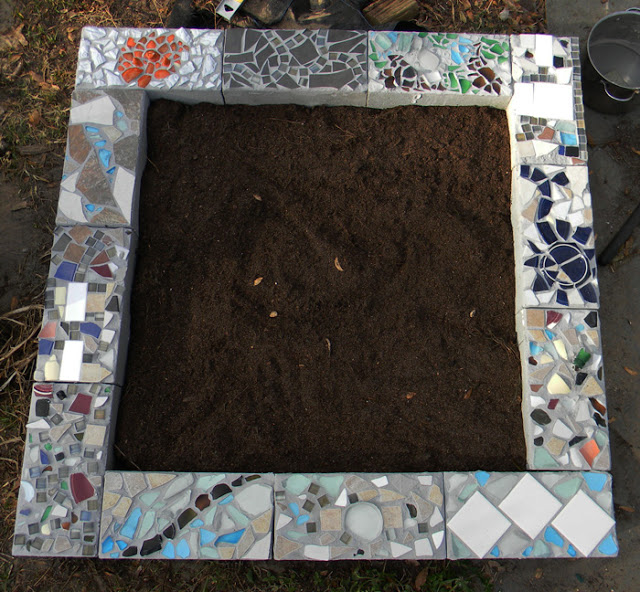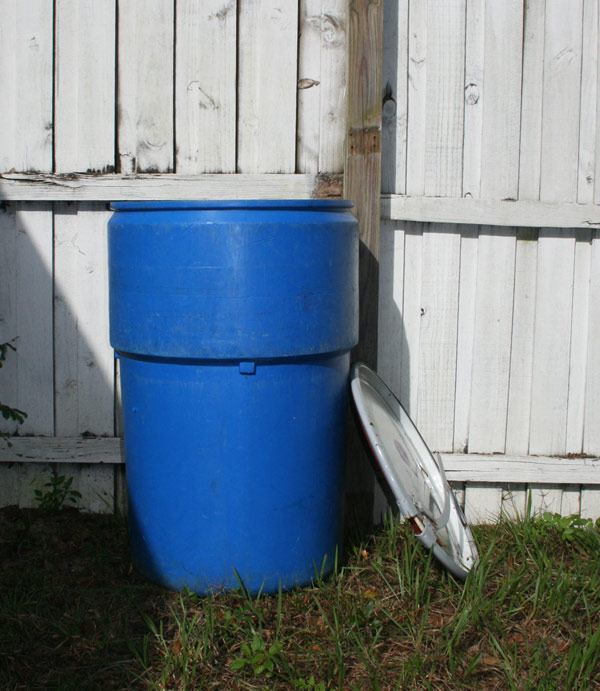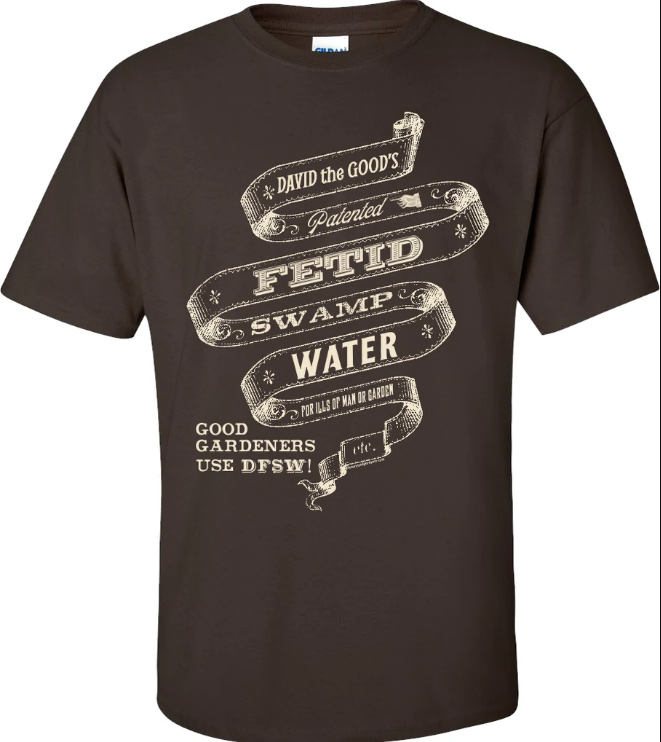Phillip shares his swamp water application method and some results. -DTG
“We are at the point where the garden is getting once-a-week swamp water applications.
We have set a empty barrel by each garden and drag out the sump pump and fine kitchen strainer.
We have 15 gallon barrels that get 7 quarts of swamp water per fill.
Here is the process.
1. Strain 7 quarts of swamp water into barrel
2. Put pump in barrel
3. Top off with rain water from catchment system
4. Foliar feed corn, sunflower, and squash until we see flowers. Then only use 4 inches off the ground for corn and sunflower.
By the way, the Asian pears seem to really appreciate the nutrients. This is the last month of fruit growth and all look perfect. Especially for trees that were in pots last spring.
We plant 2 or 3 corn seeds per hole this year and got 2 or 3 plants. After 6 weeks we decided to thin with scissors. Between the thinnings and weeds that get thrown back into the rows, it has pretty much self composted the bed and really keep the swamp water moisture in. My wife thought I planted the sweet corn way too close. But between the remineralizer and swamp water we have dark green fat corn leaves.
My father-in-law grew up raising nothing but corn and market hogs in west Tennessee. He was surprised by how green and well shaped the corn is.
He said, “It’s got good color. I would keep doing what your doing” So my swamp water corn compares to corn raised in the 60’s and 70’s. Back then they pumped nitrogen gases into the soil.
So to say – I’m beyond pleasantly surprised! Thanks again David for saving us a lot of money on fertilizers. Plus we are not killing ourselves making compost.”
Thank you, Phillip. I like the sump pump idea. That’s much easier than my normal method of watering with two watering cans.
We’ve been in rentals where I haven’t wanted to invest much in my gardens, other than time! Now that we’re in a place of our own, it would make sense to create a system like that. Perhaps getting a sump pump to use with my 55-gallon drums, since I have a lot of those. We could also make our swamp water from our pond now, bypassing the chemical-laced county water supply.
It’s very gratifying to get stories like these of gardens that are thriving on the composting methods I cover in Compost Everything. That book sure has legs!
In Other News
Today I should finish varnishing the wood floor in one of our outbuildings, in preparation for it become our new music recording space. We have gotten a lot of moving done, but with animals and children and lots of plants, it’s a long process. We still need to build a new chicken coop and get our goats and rabbits back from a friend’s place. And move my entire potted plant nursery from another friend’s backyard. The deer fence is almost done around the new garden area, then we can start rebuilding the Grocery Row Gardens we left behind.
I know it sounds crazy, but now that I have a permanent location, I think it would be fun to build a few raised beds for salad greens, like this one I built with my children long ago:

There are a few wet spots and some slab areas that might suffice.
But I’m just dreaming right now… there is a lot more I need to get done before I break out the mosaic supplies again.
Once I get my plants back from my friend’s house, I can start planting trees as well. I have quite a few I left in pots because I didn’t want to put them in at the rental place.
Many have written and said things like “how can you leave such an amazing garden behind? All those trees! All that work!”
Well, to tell you the unvarnished truth: it’s a living! Wherever I go, I have to plant, whether I think I can keep the property or not. If I don’t have a garden growing, I don’t have anything to write about or anything to film. I doubt I would be nearing a quarter-million YouTube subscribers if I had just talked about gardening, rather than actually gardening in the last few places we had to rent.
Do I hate leaving all the trees? Yes! But it is what it is. I learned a lot from my pruning and planting, I developed the Grocery Row Garden system, and I created a lot of good posts and videos based on what we did.
I never want to move again. It’s painful and difficult and time-consuming. My income has fallen off by 2/3 in the last couple of months, plus there have been many expenses associated with moving, from paying for fencing to renting storage units to paying for repairs to getting a mortgage on a new house.
But the LORD is good, and we have not run dry! And we managed to get a new space to garden before the fall season starts. The deer fence should be done today, then we can start digging beds.
And making swamp water, of course. Lots and lots of swamp water!
Thanks for hanging on. I posted a new video from the old property today, and hope to record more footage at the NEW place this afternoon.



5 comments
David I’m really glad that you are working on your garden and not a rental. Using barrels and a harbor frieght sump pump is a game changer. After this fall I’ll have a really good idea how much I’ll need next year.
My 12 year old is already talking aboit.making a quick hot swamp water with used chicken bedding.
Now we are working on nitrate barrels. There is a local sawmill that we get our bedding shavings from. The process is poke holes in 50 gal barrel bottom and set on rocks.
Fill barrel with carboniferous material. In our case hardwood sawmill shavings. Then add urine. Enough to soak the material and drip on the ground. The author say 2 liters a day but he used a 5 gallon bucket for a single weekly application. 6 months of wetting and 6 months of waiting. The bacteria turn ammonia into nitrites then nitrates. I’m supposed to end up with ⅓ of the original volume. I need a side dressing for when i can’t use swamp water. For salads, carrots, potatoes etc. So the learning continues.
That is an excellent idea.
Whar was the result when you added to things like carrots potatoes greens etc? The back 7 acres of my property is hardwood swamp. Just curious what works best with that water, and why. Thanks!
I’ve been brewing swamp water in a five gallon bucket all summer, and it is quite fetid! I have used it diluted about once a month, and my plants seem to like it. Today I added some really hot peppers to it, and some toothache plant I cut back, thinking these 2 things might add some insect repellent to my brew. Have you tested hot pepper swamp water?
No, but sounds like a good idea.
Comments are closed.